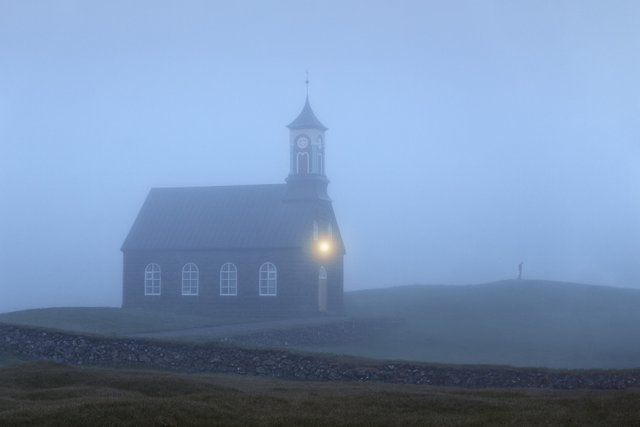In this article I'll share five tips on how I actually improved my photography. Here I'm not talking technicalities such as sharper images, shallow depth of field, using a tripod, or removing your lens cap. If you want to improve your photography beyond the craft with the camera itself, you have to work for it and you might have to change the way you think about it. The following five tips helped me to develop my artistic skills more than my technical.
Editing Is OK
The first tip is to enjoy the editing part. As much as many photographers these days say, “shoot more”, “edit less”, and “wouldn’t you rather spend your time photographing than editing”? You have to learn some proper editing techniques. Editing is absolutely essential to digital photography as the work in the darkroom is to the analogue photographers. Those people thinking a photo straight out of the camera and un-edited is somehow better, truer, or whatever excuse they can find to not edit their photos, are cheating themselves. Even the best photojournalists apply some kind of post-processing to enhance the story.
What you shoot is a digital file; it’s a digital negative. It’s light absorbed on a sensor, which the nice guys at your favorite camera brand have managed to put into a digital file, which is shown as an image on your monitor. It’s data manifested as an image, that’s it. If you’re shooting JPGs the picture profile you’re using has been calibrated from the factory to treat that data in a certain way. No matter how you approach that file, some processing has been applied, which has been decided by humans working in these factories. You cannot avoid some kind of post-processing because it’s a fundamental part of digital photography. Taking a photo in raw you have all the data available, which the camera caught. But, just as a painter choose with what and how he paints his canvas, it’s your job as a photographer to decide what colors and tones you want to emphasize, as to tell the story you want to tell. The effects, colors, and tones used can differ from photographer to photographer, style to style, and field to field. Some prefer to only do minor retouching, some apply black and white, and some again make major edits. Some try to make an edit, which is close to what he or she saw in the moment, while other photographers have different goals. None of these techniques or goals are more right or wrong than others. It is all about working with intention, which I’ll come back to later. Editing is a part of the digital photographic process, period.
Get Your Photos Critiqued
The second tip is to get in touch with other photographers who can criticize your work. Or even better, get in to review groups with photographers who preferably are better than you. I’d also say aim for a good diversity in the members. The members do not all necessarily have to be landscape photographers if you are, but make sure they’ve got something to say and know what they’re doing. Most importantly, be grateful for the criticism! People might not be right in their critique and they might not understand your vision (if you've got one), but in 99 percent of the cases, they are right. You can make group chats on Instagram or Facebook groups, among other methods. How you go about it is up to you, but I’d suggest keeping the groups tight with a max of 10 people who you want to work with.
Photography Is a Subject
Tip number three is to realize that photography is a subject like any other, with a lot of theoretical information available. Whether it’s math, chemistry, language, music, painting, sports, or any other school subject, there’s a theoretical level and a practical level, which work together and influence each other. Photography is not just about going out shooting. In that case, it becomes happy triggering without thought or goal. That in itself is not a bad thing and can work therapeutic, but for improving your craft I’d say don’t just go and shoot; study art. More than just on YouTube. YouTube is a good start but study classic art — read a book on the subject. If the famous artists such as Leonardo da Vinci, Raffaello Santi, Rembrandt, Dali, Van Gogh, Monet, or Picasso knew how much focus the rule of thirds get in photography they’d scream out in horror and disbelief! Do you think Michelangelo used the rule of thirds to paint the ceiling of The Sistine Chapel? Of course not! A couple of directions I can point you in when it comes to digging beyond the rules of thirds is Gestalt Theory, which is a psychological theory for visual perception. There is also Dynamic symmetry, which is a complex tool and method for composition based on Gestalt Theory. You probably know about it from the work of the famous photographer Henri Cartier-Bresson. If you want to see what I mean, check out this video by Tavis Leaf Glover. Thirdly, there is of course Color Theory.
Shoot With Intention
My fourth tip is to photograph with intention. Tell a story, display a feeling, use the artistic tools to guide, stimulate, and touch the viewer — just do something which is not just “pretty”. Guy Tal has some excellent blogs on his work, be sure to check them out. Here are a few of my photos which hopefully is more than just a "click":
 )

 )
)
Hi! I am a robot. I just upvoted you! I found similar content that readers might be interested in:
https://fstoppers.com/education/how-actually-improve-your-photography-251179
Downvoting a post can decrease pending rewards and make it less visible. Common reasons:
Submit